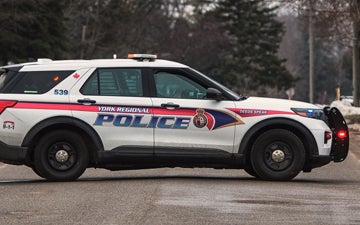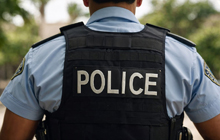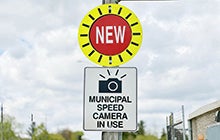Facing wage pressures, YRP requests double-digit budget hike

A proposed York Regional Police budget hike would account for most of the overall tax levy in one of the lowest municipal property tax regions in Ontario
- YRP’s proposed 2026 gross expenditures total $547 million, a 12.7 percent net increase over 2025.
- If the budget is approved, approximately $499 million would be funded by York Region’s tax levy.
- Roughly 98 percent of the $56.3 million increase is tied to wage-related costs.
- The main cost driver is a collective bargaining agreement that has added $23.1 million in 2026 salary costs.
- 150 new full-time positions have also been proposed, including 56 frontline officers.
- The Region maintains that it has comparatively low policing costs per capita.
- The plan will require a 3.22% tax levy increase through York Region’s 2026 operating budget.
- While the final number is pending approval in November, YRP’s requests would form part of a combined 4.22% Regional tax increase.
YORK REGION, Oct. 22, 2025 – York Regional Police (YRP) is proposing a $547 million gross operating budget for 2026, representing a 12.7 percent increase in tax-supported spending over the previous year. The plan, approved by the York Regional Police Services Board in September, reflects rising personnel and wage costs within the department.
Nearly $499 million (91%) of the ask would be covered by the Region’s tax levy. That amount is $56.3 million higher than in 2025. The remaining $47.6 million would come from YRP revenue sources, including paid duties, provincial grants, and non-enforcement services such as background checks and collision reports.
A YRP report released in September indicates that 98 percent of the requested increase, roughly $55 million, is tied to wage-related expenses. $4.95 million is needed to support the addition of 150 new staff members, which would bring the service’s total complement to 2,795 full-time equivalent positions.
According to York Region’s draft 2026 budget book, 90 percent of those new roles are dedicated to building policing resources. 56 positions are slated for “investigations and specialized support areas such as air support and hate crime prevention.” A further 56 positions will be assigned to “frontline patrol and community support,” distributed among YRP’s five districts to boost local policing.
The most significant contributor to the 2026 increase is a newly ratified five-year collective bargaining agreement with the York Regional Police Association, which represents both uniform and civilian members. Effective August 1, 2025, the deal provides members with a 6.81 percent pay increase, followed by annual raises ranging between 2.5 and 3.5 percent through 2030.
“The agreement is centered on supporting recruitment, retention, and member wellness, while balancing the fiscal health, competitiveness, and sustainability of police services in the Region,” explains YRP’s report.
Resulting salary adjustments for existing staff will cost $23.1 million next year. Additional wage pressures include $11.9 million for the annualization of staff added in 2025, and $11.3 million in benefit rate adjustments.
YRP’s proposed 2025 capital budget totals $32 million, with its 10-year capital plan valued at $237.1 million. About one-third of the 10-year plan, or $76.1 million, is earmarked for fleet investments, including vehicles, boats, and helicopters. Another $73.6 million is allocated for facility projects.
Year over year crime statistics provided in the budget book show “that while some crime types have changed marginally, crimes against persons and traffic violations have increased.” In 2024, YRP fielded nearly 331,000 emergency calls, saw a 10 percent increase in drug-related offences, and faced continued growth in organized criminal activity.
Officials say these cases can require resource-intensive strategies and processes, and can also involve multi-jurisdictional investigations in need of specialized expertise. “Maintaining staffing growth will ensure York Regional Police has the operational and investigative capacity to keep pace with the growing population, rising crime complexity, and the need to proactively combat organized crime,” the budget book reads.
To offset rising costs, YRP is pursuing a series of efficiency initiatives. Among them are reductions in fleet fuel expenses through the adoption of hybrid vehicles, and cost savings by bringing its air support pilots and maintenance operations in-house rather than relying on contracted services. A self-reporting portal for minor vehicle collisions implemented this year is also expected to deliver further savings through 2026.
Despite their efforts, the 2026 plan presents greater expenses than what was forecast in the Region’s previous multi-year analysis. That outlook, published alongside the tabling of York Region’s 2025 budget, had estimated 2026 gross spending at $514 million, with $469 million funded through the tax levy.
The Region maintains that its policing costs and crime rates remain favourable compared to other major municipalities. Regional data show York’s Crime Severity Index and gross policing costs per capita are lower than those recorded in Peel Region, Toronto, and Ottawa.
Overall, YRP’s budget increase would necessitate a 3.42 percent rise in York Region’s 2026 tax levy. However, a net 0.2 percent in operating efficiencies were found elsewhere in the Region's budget, reducing the needed operating levy increase to 3.22 percent. Including the one percent Rapid Transit/Infrastructure Levy, the Region’s overall tax levy is currently proposed to rise 4.22 percent.
York Region’s draft 2026 operating and capital budgets will be presented to Regional Council on Thursday, Oct. 23. Councillors will have an opportunity to propose and debate amendments before the final budget vote on Nov. 27.
Randy Barba is a Local Journalism Initiative reporter with the Bullet Point News in Stouffville, Ontario. Title imahe: YRP's main cost driver is a collective bargaining agreement that has added $23.1 million in 2026 salary costs. (Randy Barba).











(0) Comments